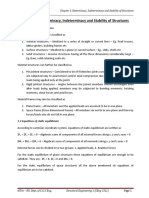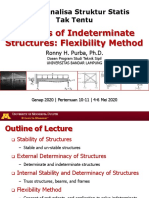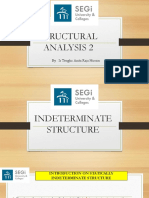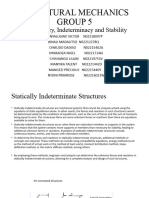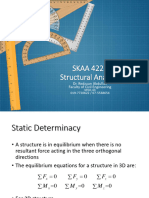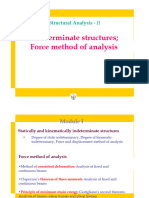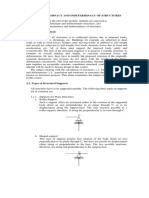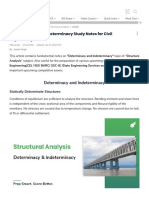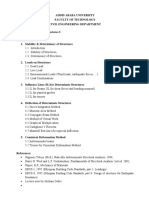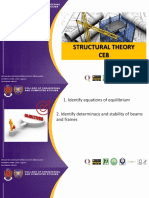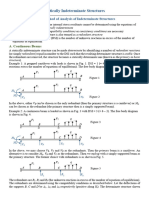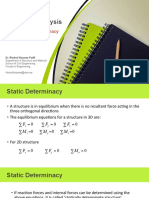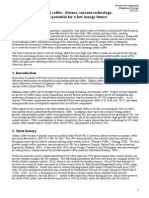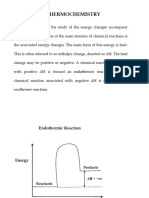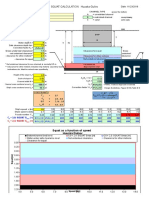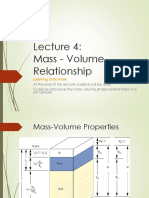0% found this document useful (0 votes)
46 views20 pagesLecture 4 Statically Indeterminate Structures
The document discusses statically indeterminate structures, providing examples and methods for analyzing them. It outlines the steps to determine reactions and internal forces using compatibility and constitutive conditions, as well as the flexibility and stiffness methods. Additionally, it explains the degree of indeterminacy and its calculation for various structural types.
Uploaded by
wiltonliu.lpcCopyright
© © All Rights Reserved
We take content rights seriously. If you suspect this is your content, claim it here.
Available Formats
Download as PDF, TXT or read online on Scribd
0% found this document useful (0 votes)
46 views20 pagesLecture 4 Statically Indeterminate Structures
The document discusses statically indeterminate structures, providing examples and methods for analyzing them. It outlines the steps to determine reactions and internal forces using compatibility and constitutive conditions, as well as the flexibility and stiffness methods. Additionally, it explains the degree of indeterminacy and its calculation for various structural types.
Uploaded by
wiltonliu.lpcCopyright
© © All Rights Reserved
We take content rights seriously. If you suspect this is your content, claim it here.
Available Formats
Download as PDF, TXT or read online on Scribd
/ 20





